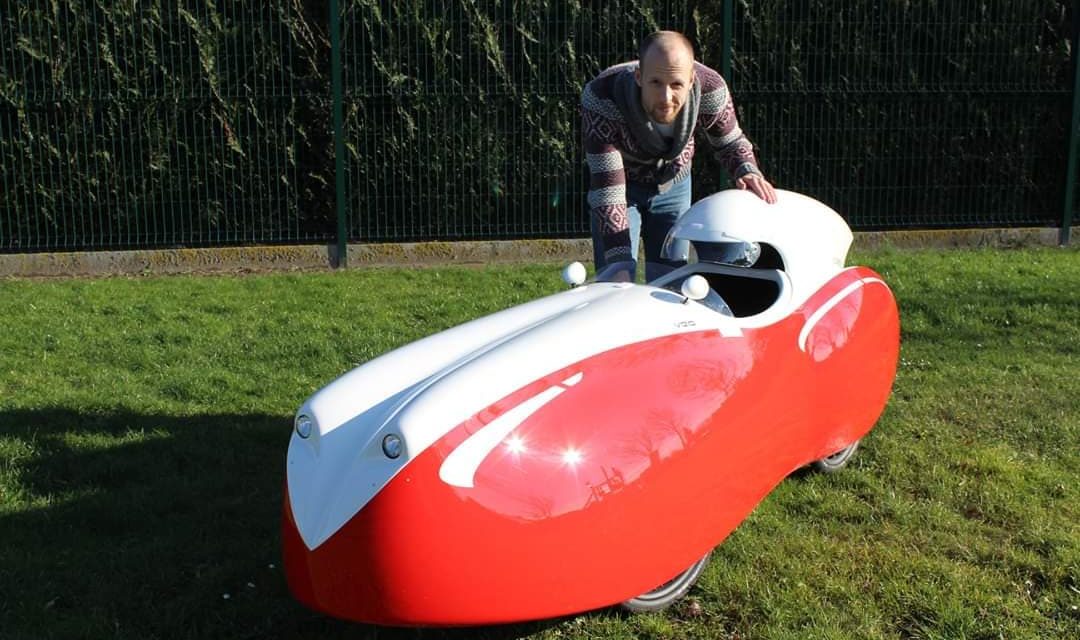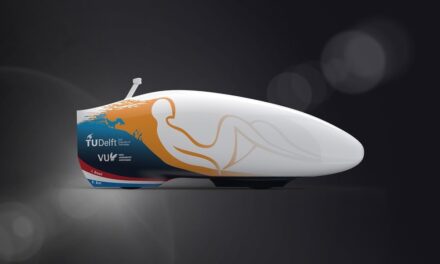- On 7 July 1933, a special bicycle broke the 20-year-old hour record on a Parisian velodrome. In 1934 the UCI declared this record to be invalid and rules were implemented to keep recumbents out of all competitions.
- In 1993 Graeme Obree broke Moser’s hour record on ‘Old Faithful’, a bicycle with narrow handlebars upon which he lay head first, ‘tucked in’. An hour before the track pursuit world championships in Italy the UCI announced that his riding position was banned and that Obree was disqualified.
- Obree went on to develop another riding style, the ‘superman’ position, in which his arms were stretched out in front of him. Using this he won the world championships track pursuit in 1995. And again, also this position was banned afterwards.
The UCI is the ‘Union Cycliste Internationale’, or rather the international cycling union. All races worth mentioning in road racing, cyclocross, time trials, track racing, mountain biking etc. follow the UCI rules and every national cycling team is a member of the UCI. It has a monopoly on everything that has to do with competitive cycling, from the youngsters racing in your local town to the Olympic Games.
Unfortunately, its monopoly is the biggest obstacle for technological innovation. The frame shape, the weight (minimum 6.8kg), the clothing (sock length cannot exceed the midpoint between ankle and knee), the number of spokes (a minimum of 12 for a road bike)… everything has been regulated meticulously. Did you know that the most forward point of your saddle has to stay 5cm behind the perpendicular line coming from the bottom bracket?
If we would consider cycling to be a purely physical battle between cyclists, we would like them all to ride the exact same bicycle. This would be a fair battle in human strength. But what about technological advancement? The minimum weight of 6,8kg dates back to the year 2000… that’s twenty years ago.
Bicycle manufacturers spend millions in research and development but only create bicycles for the public which follow theses UCI rules. These companies will easily charge you €8000 for a bike that’s a few millimetres different. Because nobody wants to spend their money on a bicycle they cannot use in a race. And even if you don’t race, you want the bikes that Van Avermaet, Froom or Bernal ride, don’t you? Surely they’ll have the best cycling technology?
The answer is no. Bicycles can be better. If you ride a velomobile, for example, you are sheltered from cold and rain, you can take some luggage and on top of that, you can be 10km/h faster than a regular road bike. Experiments with shapes and materials can produce much better bikes than what we see today. Unfortunately, we have, for the last 80 years or so, been obeying the UCI rules, and as a result, also your regular commuting bicycle has stayed largely unchanged.
But…
Things they are a-changing. In the world of triathlon, where the rules are less strict, we see new and exciting frame shapes popping up. For the first time ever manufacturers are taking the effort to develop bicycles for this specific market. 3D printing and easy-to-shape carbon fibre have opened a world of opportunities. On the streets, the speed pedelec and the electric bicycle are rushing forward, in both the literal as the figurative sense. It seems as if, despite everything, the moment has come to release ourselves from the shackles of the UCI and just do what we feel like. From an economic perspective, we have reached a turning point in which designers and manufacturers can also profit from some Research & Development which does not conform to the almighty Cycling Union.
Dear UCI
Dear dictator
Your kingdom is not over yet, but it is crumbling under your feet.
Sincerely yours
Jan Trenson






